Bridge Tower Place, 401 East 60th Street: Review and Ratings
between First Avenue & York Avenue View Full Building Profile
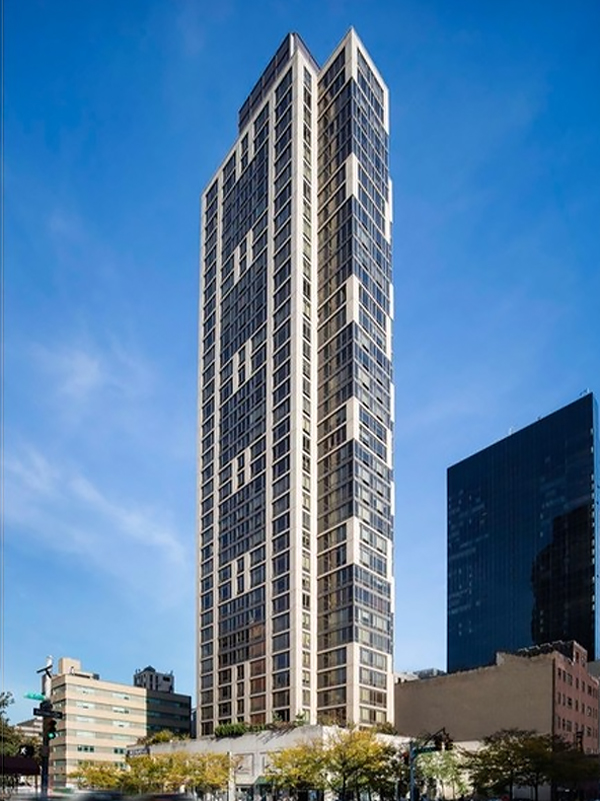

Bridge Tower Place is a 38-story apartment tower at 401 East 60th Street on the northeast corner at First Avenue that was completed in 2000 by the Brodsky Organization, one of the city's leading developers.
It is a handsome addition to the Ed Koch Queensboro Bridge gateway to Manhattan, the city's most spectacular entrance.
The development has 218 apartments, 127 of which are in the tower, which was designed by Costas Kondylis.
Bottom Line
An attractive tower with spectacular views of the Ed Koch Queensboro Bridge, the city’s most beautiful. It is convenient to Bloomingdale’s to the west and Sutton Place to the east and south.
Description
The dark-glass tower, which is setback on a low-rise base, has pattered façades with two-story-high stone framings and stone quoins on a protruding bay.
The building, which is also known as 400-418 East 61st Street and 1101-1112 First
Avenue, has a marquee entrance set in a nicely landscaped plaza that has seating.
Amenities
The building has an attended lobby, a garage, a roof deck, a bicycle room, a children’s playroom, a fitness center, a concierge and a laundry.
It is pet-friendly.
Apartments
There are four apartments per floor in the base of the building and three per floor in the tower. The three-bedroom apartments on floors 26 through 38 have 10-foot-high ceilings.
The lobby was designed by David Rockwell with a silver-tinted lacewood wall.
Apartment 14D is a two-bedroom unit that has a 19-foot-long foyer that leads into a 21-foot-long living room adjacent to an 11-foot-dining room off a 10-foot-long, enclosed kitchen.
Apartment 7A is a one-bedroom apartment with a 10-foot-long foyer that leads to a 21-foot-long living room next to a 12-foot-long den. A 14-foot-long gallery leads past an enclosed 10-foot-long kitchen to a 14-foot-long bedroom.
Apartment 3A is very similar to 7A but has a very large terrace with entrances from the living room and the bedroom.
Apartment 20C is a one-bedroom unit that has a small foyer that opens into a 22-foot-long living room next to a 10-foot-long dining room off the 10-foot-long enclosed kitchen.
Apartment 30C is a three-bedroom unit that has a 15-foot-long foyer that leads into a 23-foot-long living room next to an 11-foot-long dining room off an enclosed kitchen.
The penthouse has a foyer that a opens into the 21-foot-long living room next to a 15-foot-long dining room next to a 12-foot-long kitchen. The apartment has three bedrooms and a laundry and is surrounded on four sides by terraces with entrances from the living room, the master bedroom and the kitchen.
History
In 1986, Jeffrey Glick of the Glick Organization planned a 1.6-million-square-foot development of a 2.3-acre site here with two 49-story towers with 520 apartments, a hotel, six movie theaters and office space. The design called for two rounded-corner, L-shaped towers with bands of limestone and gray glass and capped by domes that would be illuminated at night. Offices were to be in the base of the western tower and the hotel in the base of the eastern tower.
His plan was approved by the City Planning Commission but the towers were reduced in height to 509 feet, or 42 stories and the total square footage to only 1.28 million. Several local civic groups sued the city on the basis that the project's environmental impact on the neighborhood had not been fully accounted for, but a recession forced Mr. Glick to abandon the project and Milstein Properties acquired the eastern end of the site and then sold it to the Brodsky Organization and Peter M. Lehrer. Sheldon H. Solow eventually bought the western part of the Glick site.
Mr. Kondylis had designed the Glick project and then redesigned it for the Milsteins before redesigning it again for the Brodsky Organization.
This area was for many years undesirable because of the bridge's heavy traffic as well as Second Avenue's heavy traffic and the popular nearby destination of Bloomingdale's at Third Avenue. It was also rather rundown.
The Ed Kohn Queensboro Bridge is the city's most romantic with its Gothic-like tracery and multiple towers and finials and residents who are joggers will love the proximity of the waterfront run nearby. There are also several small parks close to the river nearby.
The city enclosed some of the great Gustavino vaults beneath the bridge to use them as storage for various city departments, but in early 2000 many of them were gloriously reopened as Bridgemarket, a project initiated by Harley Baldwin about 20 years earlier and finally brought to fruition by Terence Conran, the British retailer of home furnishings.
The opening of Bridgemarket as an up-scale food and home furnishings emporium/center had been fiercely opposed by many residents of the Sutton Place neighborhood who feared it would further exacerbate traffic in the area. It has to an extent but in the process it provided a quantum leap upwards in ambiance
In the 1990s, the Brodsky Organization became one of the city's most active developers of luxury apartment buildings, many of which are in the Lincoln Center area. Glick's instincts were right and while smaller the Brodsky project is even more elegant.
Location
This building relates in no way to its surroundings but its bold glass façade is pleasantly patterned and bright.
The context at this location is a mix of "modern" styles: on the north side of the bridge to the west of this tower is the very delightful Evansview tower with its red roof in "Memphis" post-modern style while Rockefeller University has several gritty towers to the west that are uninspired but not really unattractive.
On the south side of the bridge looms the staggered-plan, 48-story monolith known as the Sovereign whose east façade is abutted, in pilot fish fashion, by a smaller and glitzier tower, and the rather Brutalist-style Landmark apartment tower at Second Avenue.
These buildings are rather spread out around the Manhattan entrance to the bridge, which dominates this area and is made more dynamic by the colorful tram and its large station on Second Avenue.

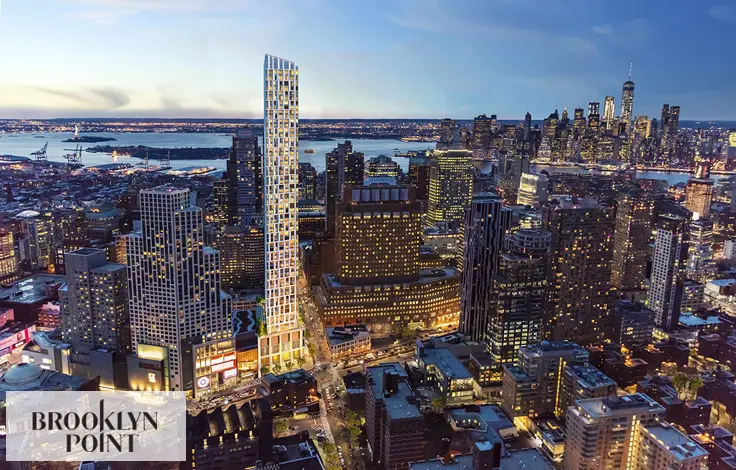
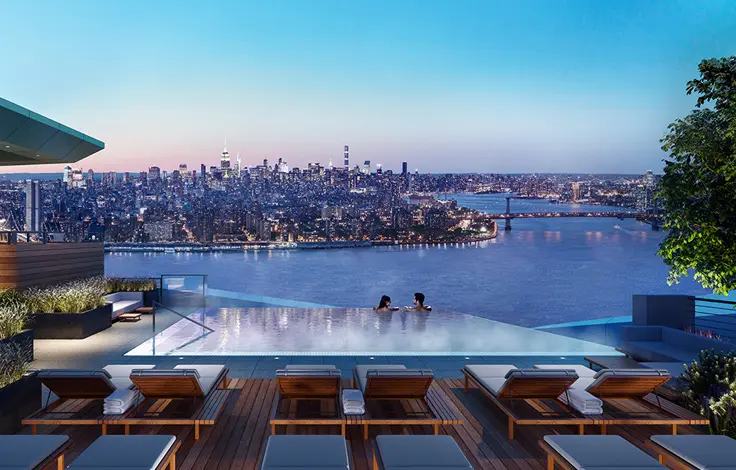
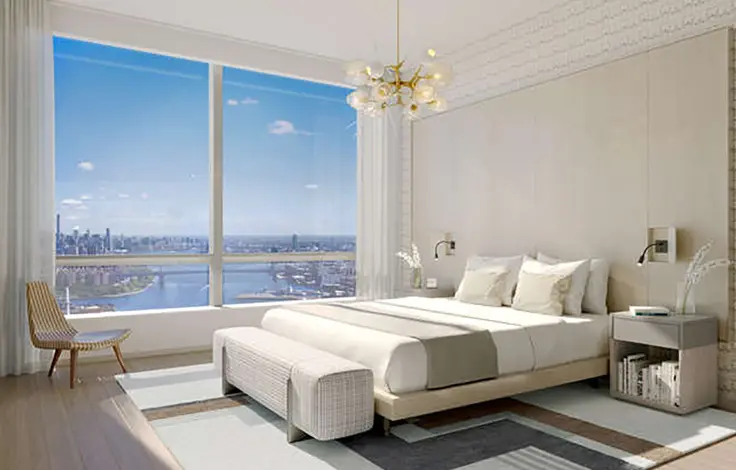
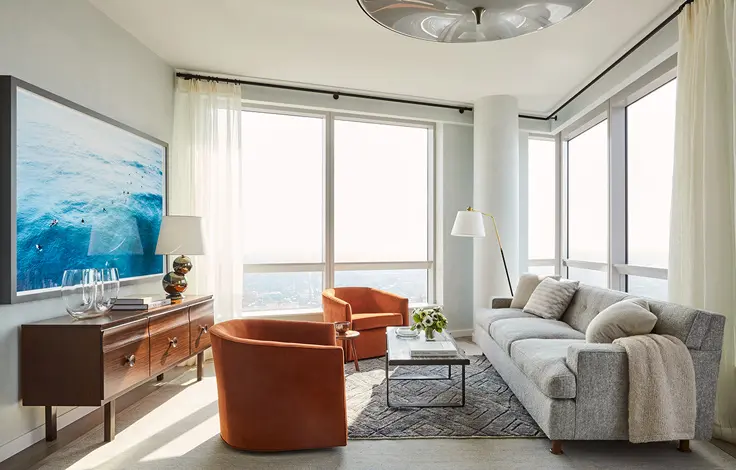
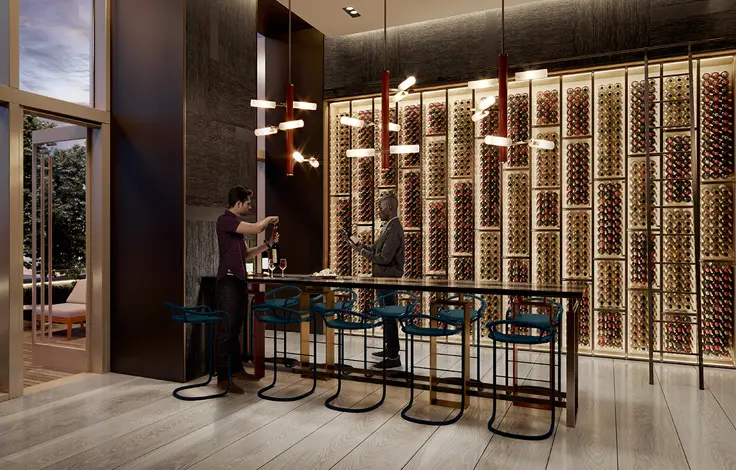
 6sqft delivers the latest on real estate, architecture, and design, straight from New York City.
6sqft delivers the latest on real estate, architecture, and design, straight from New York City.
